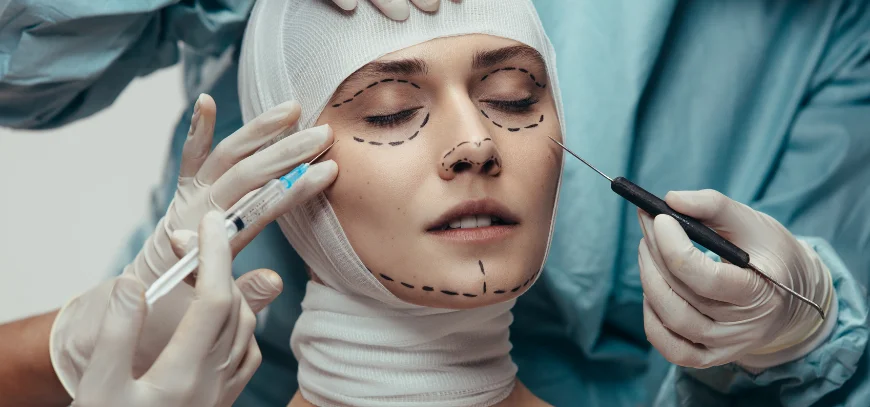The jaw and face are areas of our body that can be exposed to trauma. Injuries to the jaw and face often occur due to road traffic accidents, strokes and falls. These injuries can affect soft tissue and bones. These bones that can be injured are from top to down regarded as; frontal bone (forehead bone), eyeball bones (orbita), zygoma and arch (cheekbone and its extension), maxilla (upper jawbone) and mandible (lower jawbone). Each of these bones can have a separate fracture, as well as a fracture of several bones at the same time. Each fracture has different clinical scenarios and requires different treatment. After the trauma, the patient should be examined by a plastic surgeon as soon as possible and fracture should be evaluated with the appropriate imaging method. In maxillofacial fractures, many factors such as presence of a fracture, placement of the fracture, whether the area with the fracture is displaced, whether it creates problems with vision, chewing or opening and closing the mouth are evaluated and the decision of the operation is taken.
In eyeball (orbital) fractures, surgery may be decided due to changes in the visual function of the person, especially double vision(diplopia) and limitation of gaze. In the operation of these fractures, the walls of the eyeball are usually reached by incisions made through the eyelids. After the broken part is corrected, if there is no deficiency in the bone, the titanium plate is fixed with screws. If there is a bone deficiency, especially at the base of the eyeball, this deficiency is completed by using bone patches (bone grafts) taken from the body or substances called medpor.
Cheekbone (zygoma) fractures are basically divided into two as fractures of the main body of the bone or its extension towards the front of the ear (zygoma arch). In arch fractures, it is more isolated, there is usually no fracture in other bones. A restriction in the opening of the mouth and the formation of a collapse in that area are conditions that require surgery. In this case, under local anaesthesia and sedative medication (general anaesthesia is often not needed), with an incision of about 2 cm long made through the hair, under the collapsed area is entered and the collapsed bone area is removed and taken to its correct place. In fractures of the main body of the cheekbone which are often accompanied by fractures of other bones, the situation is more complicated and requires more extensive surgery. In this surgery, the bone is reached through the eyelid and mouth, the bone is brought to its correct position and fixed with titanium plate screws at 2 or 3 points.
Fractures of the upper jaw (maxilla) are divided into three according to the line through which the fracture line passes (LeFort-1,2 and 3). A disorder in the overlapping of teeth and bite or numbness in the face are the reasons that lead us to decide on surgery. In the treatment of maxillary fractures, the bone is reached with a surgical incision through the mouth and repairs are made to the bone with titanium plate screws, taking into account the harmony of the upper jaw and lower jaw. After this surgery, sometimes the upper and lower jaws can be connected with elastic bands for 2-3 weeks so that the jaw can be healed with a correct closure.
Treatment of fractures of the lower jaw (mandible) differs depending on the location of the fracture or fractures. Except for fractures that are usually close to the jaw joint, the broken segments are taken to their correct place with incisions made through the mouth and fixed with titanium plate screws. After this surgery, the upper and lower jaws are connected with elastic bands for 2-3 weeks, and the jaw is healed with a correct closure.
Bone fractures in the jaw and face are serious injuries that may require treatment with complex surgical procedures and have a long-term risk of sequelae. For sure, there may be other problems accompanying these injuries. For this reason, a plastic surgeon should be consulted without wasting time after the first treatments in the emergency room are completed.

